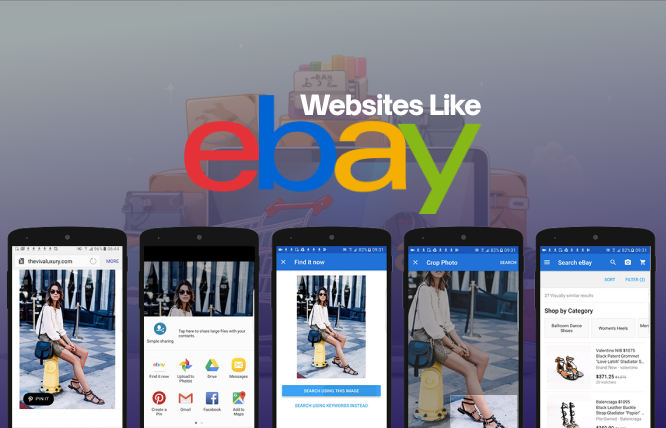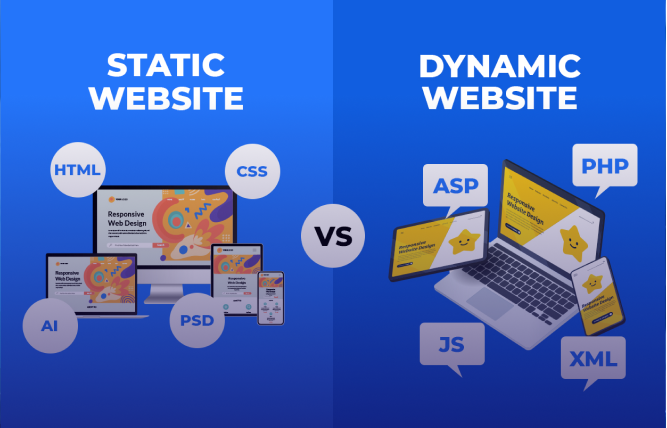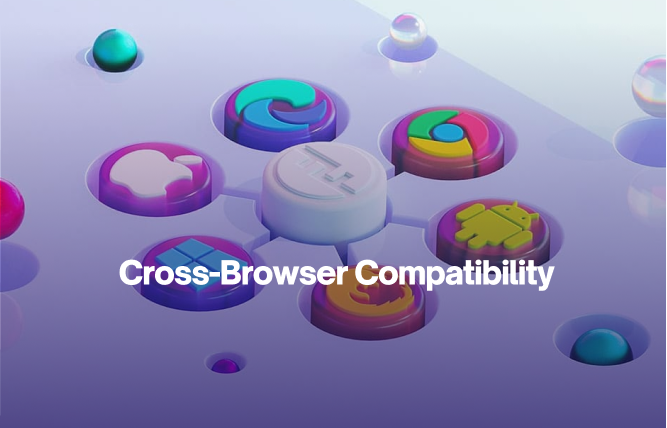Introduction
Let’s check out step by step how you can build websites like eBay and the cost associated with website development.
As an online seller who doesn’t wish to have their website live and generate sales in bulk! Well, if you are one of those dreamers, then you are lucky. In this blog, we are going to see how you can build websites like eBay and how much it really costs to bring the website live.
We will have a step-by-step guide, and I will explain everything in detail. Before diving in, let me tell you, set your expectations low and your efforts high because you’re tapping into a booming industry.
In the past few years, there has been significant growth in online marketplaces. By 2023, the worldwide e-commerce industry had surpassed a value of $5 trillion, with eBay, Amazon, and Alibaba at the forefront.
These platforms have transformed how we shop; they offer convenience and a diverse selection of options. The reason they are popular is because they can bring together different products and provide a hassle-free shopping experience.
What’s driving this growth? The rise in online shopping began gaining significant attention during the pandemic, and it hasn’t slowed down since. Now is the perfect time to consider creating your own marketplace website, such as eBay or Etsy. Plus, with smartphones, it’s easier than ever for people to shop and sell on the go.
Why Build Your Own Marketplace?
These platforms are now extremely efficient in bringing together buyers and sellers from all over the world, generating significant profits. So, why not build your website like eBay? Developing an e-commerce marketplace for buying and selling has many advantages.
It gives you a virtual space to list down your products for buyers and resellers. Building a website has still so much to explore, whether it be a multi-vendor marketplace or a peer-to-peer marketplace.
Moreover, owning the platform gives you control over the user experience, branding, and monetisation strategies. With custom e-commerce solutions, you can cater to unique market needs and set yourself apart from competitors.
Let’s Check Out the Steps to Build a website like eBay
Building websites like eBay involves a well-thought-out process that covers everything from planning to execution. Let’s dive into the essential steps:
Step 1: List Down Your Objective and Target Audience
The first step to building a successful marketplace is defining your niche. What products or services will you focus on? Will you be a general marketplace like eBay, or will you specialise in a particular category? Once you’ve narrowed down your niche, you can start to identify your target audience.
Understanding your ideal audience is crucial for building a website that resonates with them. Finding out their needs, preferences, and buying behaviour will help you tailor your marketplace to their specific interests.
For instance, if you’re building a marketplace for handmade crafts, your target audience might be individuals interested in unique, one-of-a-kind items. On the other hand, if you’re focusing on electronics, your target audience will likely be tech-savvy consumers looking for the latest gadgets.
Step 2: Identify Essential Features for Your Marketplace
Next, you need to determine the core features your marketplace will offer. While you might not be able to replicate every feature of eBay right away, you should focus on the essentials.
A basic marketplace typically includes:
- User registration and profiles – To enable buyers and sellers to create accounts and manage their information.
- Product listings – To help sellers create detailed listings with images, descriptions, and pricing.
- Search and filters – To let buyers easily find products based on keywords, categories, and other criteria.
- Shopping cart and checkout – To enable customers to safely add products to their cart and finalise transactions.
- Payment and shipping options – To provide a way to transfer the payment.
These are just some of the essential features to get you started. You can always add more functionalities as your marketplace grows.
Step 3: Choose the Right Technology Stack
Choosing the appropriate technology stack is essential to creating a scalable and efficient marketplace. This includes selecting the programming languages, frameworks, and databases that will drive your platform.
Popular choices for marketplace development include:
- We have React, Angular, or Vue.js for the front end to build interactive user interfaces.
- For the backend, we have Node.js, Python (Django or Flask), Ruby on Rails, or Java (Spring) for handling server-side logic.
- Then, we have MySQL, PostgreSQL, MongoDB, or Cassandra to store product information, user data, and transactions.
- Cloud storage is not a problem since we have reliable and most popular cloud platforms like AWS, Google Cloud, or Microsoft Azure for hosting your marketplace and scaling resources.
Consider these factors when making your decision:
- Scalability: Your tech stack should be able to handle increasing traffic and data as your marketplace grows.
- Performance: Choose technologies that deliver fast load times and a smooth user experience.
- Security: Prioritise robust security measures to protect user data and prevent fraud.
- Developer expertise: Consider your development team’s skills or developers’ availability for your chosen stack.
- Cost: Evaluate the pricing models of different cloud platforms and software licenses.
By carefully selecting your technology stack, you’ll lay a solid foundation for your marketplace.
Step 4: Design and Develop a Seamless UI/UX
Having an excellent user experience is important for the prosperity of every online marketplace. Your website needs to have an attractive visual design, simple navigation, and easy usability.
Key UI/UX considerations for your marketplace:
- Clear navigation
- Responsive design
- Search functionality
- Simple and nice product pages
- Easy checkout process.
- Mobile optimisation.
Invest time in user testing to gather feedback and refine your design. A well-designed marketplace will encourage repeat visits and increase sales.
Step 5: Integrate API and Add Additional Features like Payment & Shipping
You’ll need to integrate various APIs and services to create a fully functional marketplace. This includes payment gateways, shipping carriers, and potentially other third-party tools.
Essential integrations might include:
- Payment gateways: Consider popular payment providers to offer multiple payment options to your customers (e.g., PayPal, Stripe, Apple Pay).
- Shipping carriers: Link shipping services to provide accurate shipping rates and track packages.
- Tax calculation: Provide a tax calculation tool to charge sales tax based on customer location accurately.
- Customer support: Offer live chat or email support to assist buyers and sellers.
By thoughtfully choosing and incorporating these APIs, you can improve the features and user satisfaction of your marketplace.
Tip: Building a successful marketplace website like eBay takes time, effort, and continuous improvement. So, you may start with an MVP and then scale it up based on your requirements.
Now Comes the Important Part – The Cost of Websites like eBay
Building a marketplace like eBay is a significant investment. Let’s break down the costs involved.
Development Costs
The core development of your marketplace will be the biggest expense. This includes:
- Team building: Hiring developers, designers, and project managers. The cost depends on team size and expertise, ranging from $50,000 to $200,000+.
- Technology stack: Costs associated with the software and tools you choose. This can vary widely, typically costing between $10,000 and $100,000.
- Development time: The hours spent building and testing your platform. Depending on complexity, this could be anywhere from $50,000 to $500,000.
The development cost can significantly differ based on the complexity of your marketplace, your development team’s location, and your developers’ hourly rates.
Design and UI/UX Costs
A nice-looking website like eBay and a user-friendly interface are much needed for the success of your marketplace. Design and UI/UX costs include:
- Designers’ fees: Hiring designers to create the look and feel of your platform. Costs usually range from $5,000 to $50,000.
- User testing: Conducting tests for a positive user experience, typically costing between $1,000 and $10,000.
- UI/UX development: Implementing the design on your website like eBay, can cost from $10,000 to $100,000.
Investing in a strong design foundation can pay off in the long run by improving user satisfaction and increasing conversions.
Marketing and Advertising Costs
To attract users to your marketplace, you’ll need to invest in marketing and advertising. This includes:
- Branding and Marketing Materials: Developing your brand identity and marketing collateral. Costs can range from $5,000 to $20,000.
- Search Engine Optimisation (SEO): Improving your website for better search engine performance. The cost of SEO can vary from $1,000 to over $10,000 per month.
- Pay-Per-Click (PPC) Advertising: Advertising on search engines and social media. Budgets can range greatly, often beginning at $1,000 monthly.
- Content Marketing: Creating valuable content to engage your audience. Costs can range from $2,000 to $10,000+ per month.
Marketing costs can vary depending on your target market, competition, and chosen marketing channels.
Ongoing Costs (Hosting, Maintenance, etc.)
Once your marketplace is live, you’ll have ongoing expenses to maintain it:
- Hosting: Paying for server space, ranging from $500 to $5,000+ per month.
- Domain Name: Registering and renewing your domain costs around $20 to $100 per year.
- Security: Implementing security measures, which can range from $500 to $5,000+ annually.
- Maintenance: Updating software and fixing bugs, typically costing from $5,000 to $50,000 annually.
- Customer Support: Providing assistance to users, with costs varying widely based on support needs.
These costs may seem manageable initially but can add up over time. Budgeting for ongoing expenses is crucial for the long-term sustainability of your marketplace.
So, You Now Know the Development Steps and the Cost of Building Websites Like eBay. It’s Time to Market and Secure Your Website!
After investing time and resources into developing your website, it’s crucial to focus on marketing and securing your platform. This is where your efforts will pay off, as you attract users and protect their data. Let’s explore some essential strategies to get your website ready for the market and ensure its safety.
Monetisation Strategies
To make your platform profitable, consider various monetisation strategies. Start by charging a commission on each transaction, a popular approach for multi-vendor marketplace development. You can also offer premium listings or featured spots for sellers, which can boost their visibility. Subscription models, where users pay a regular fee for additional features or access, are another effective way to generate steady income.
Affiliate marketing can also be a valuable revenue stream.
You can make money by advertising products from other companies on your website. This model is called affiliate marketing. You get a commission from any sales made through the links. Moreover, revenue can be generated through advertising as your website’s traffic increases, whether it be through Google AdSense or direct partnerships.
Legal and Regulatory Considerations
Running a marketplace involves legal obligations. You must create well-defined terms of service and privacy policies to safeguard your business and customers. These documents need to detail the regulations of the platform, user privileges, and the procedures for managing personal data.
It is crucial to adhere to both local and international regulations. If you are focusing on EU users, you need to follow the General Data Protection Regulation (GDPR). This involves getting permission from users to collect data and giving them the choice to have their data removed.
Intellectual property rights are another critical aspect. Ensure that sellers don’t list counterfeit or prohibited items. Implement a system for reporting and removing such listings promptly to avoid legal issues.
Security and Data Protection
Websites such as eBay should prioritise security above all else. Users have confidence in you with private information, ranging from personal information to payment data. Enforcing strong security measures safeguards this data and upholds the reputation of your site.
Utilise SSL certificates to encrypt data and ensure secure communication. Frequently update your software and plugins to avoid being vulnerable to attacks. Two-step verification increases the level of security for user accounts, making it more challenging for unauthorised entry.
Think about hiring professionals in cybersecurity or collaborating with website development services that focus on security. They are able to assist in establishing firewalls, monitoring for suspicious activity, and responding promptly to any breaches.
Marketplace Marketing and Promotion
Once your site is secure and compliant, it’s time to attract users. Start with digital marketing strategies tailored to your target audience. You will also need custom SEO strategies for maximum visibility of your website on search engines, placing emphasis on keywords relevant to your industry.
Content marketing has the ability to attract users as well. Blog posts, videos, and social media posts are effective ways to highlight the features and advantages of your platform. Promote content created by users, such as reviews and testimonials, in order to establish trust and increase involvement.
Paid advertising, such as Google Ads or social media ads, can also help boost your site’s visibility. Target these ads carefully to reach potential buyers and sellers who are most likely to use your platform.
Collaborating with influencers or industry leaders can give your site credibility and attract their followers. Offer them incentives to promote your platform, such as affiliate commissions or free premium features.
The Potential Return on Investment (ROI)
Investing in websites like eBay can offer significant returns if executed well. The ROI largely depends on your ability to attract and retain users, generate revenue, and manage costs.
Let’s break down the factors that influence the potential ROI:
- Multiple Revenue Streams: With diverse monetisation strategies, such as transaction fees, premium listings, subscriptions, and advertising, you can create multiple income channels. The more diverse and well-implemented these streams are, the higher your potential earnings.
- User Growth: As your platform grows in user base, both buyers and sellers will increase the number of transactions on your site. This growth amplifies your revenue potential, especially with the network effect—a larger user base attracts more users.
- Cost Management: Keeping development, maintenance, and marketing costs in check will positively impact your ROI. By investing wisely in custom e-commerce solutions and efficient infrastructure, you can manage expenses while maximising output.
- Market Demand: The demand for multi-vendor marketplaces continues to rise as more businesses and consumers turn to online platforms for shopping. Capitalising on this trend can significantly boost your returns.
- Brand Loyalty and Trust: Creating a reliable platform with top-notch customer service and safe transactions will promote returning customers and customer dedication, resulting in a steady income flow.
Need a Website Like eBay? Consult FuturByte
FuturByte specialises in crafting innovative and user-friendly e-commerce platforms. Whether you’re looking to create a peer-to-peer marketplace, a selling platform, or a full-fledged e-commerce website development, we’ve got you covered.
Our expertise includes everything from initial concept development to launch and beyond. We understand the intricacies of marketplace website design and the complexities of managing multi-vendor marketplace development. Our team can facilitate you from concept to launch; we guide you every step of the way, from choosing the right technology stack and designing an engaging UI/UX to ensuring robust security measures.
At FuturByte, we offer comprehensive software development services, including Mobile App Development Dubai and Mobile App Development KSA. Whether you’re a startup or an established business looking to expand online, we provide tailored solutions to meet your unique needs.
Investing in a marketplace is a significant decision. Let us help you navigate the challenges and opportunities, ensuring your platform is poised for success. With our experience and dedication, we can turn your vision into reality, creating a website that stands out in the competitive e-commerce landscape.
Conclusion
Building websites like eBay is a complex yet rewarding endeavour. From defining your niche and selecting the right technology stack to designing an intuitive UI/UX and integrating essential features, every step plays a crucial role in the platform’s success. By carefully planning and making smart investments, you can develop a strong marketplace that stands out, even though costs may vary.
Whether you’re a budding entrepreneur or an established business, understanding the potential ROI and strategic cost management is key to maximising your investment. By adopting a proper strategy, your marketplace has the potential to not just fulfil but surpass user expectations, building trust and loyalty.
As you embark on this journey, partnering with experienced professionals like FuturByte can make all the difference. We offer comprehensive website development services tailored to your specific needs, ensuring your platform is both innovative and reliable.
So, if you’re ready to bring your marketplace vision to life, consider consulting with us. Let’s work together to build a platform that not only competes with but thrives in today’s digital marketplace. Your success is our mission, and we’re here to help you achieve it.
Frequently Asked Questions
To build a website like eBay, start by defining your niche and target audience. Next, choose the right technology stack, design a seamless UI/UX, and include essential features like user registration, product listings, and payment options. Consider partnering with experienced developers for a successful launch.
FuturByte builds custom websites like eBay, offering tailored solutions for marketplace and e-commerce platforms. They handle everything from concept to launch, ensuring user-friendly design and robust security.
The price of creating websites like eBay can differ greatly based on factors such as intricacy, functions, technology used, and the team working on it. It generally includes expenses for design, development, hosting, and marketing. A detailed estimate can be provided by consulting with a web development agency.
Popular technology stacks for building marketplaces include React, Angular, or Vue.js for the front end and Node.js, Python (Django/Flask), or Ruby on Rails for the backend. The decision is based on the particular demands and growth potential of your project.
To monetise your marketplace website like eBay, you can use several strategies. FuturByte can help you implement these:
FuturByte specialises in setting up these features seamlessly, ensuring your site runs smoothly and is easy to use for both buyers and sellers.
To attract users to your new marketplace:
Have questions or feedback?
Get in touch with us and we‘l get back to you and help as soon as we can!




